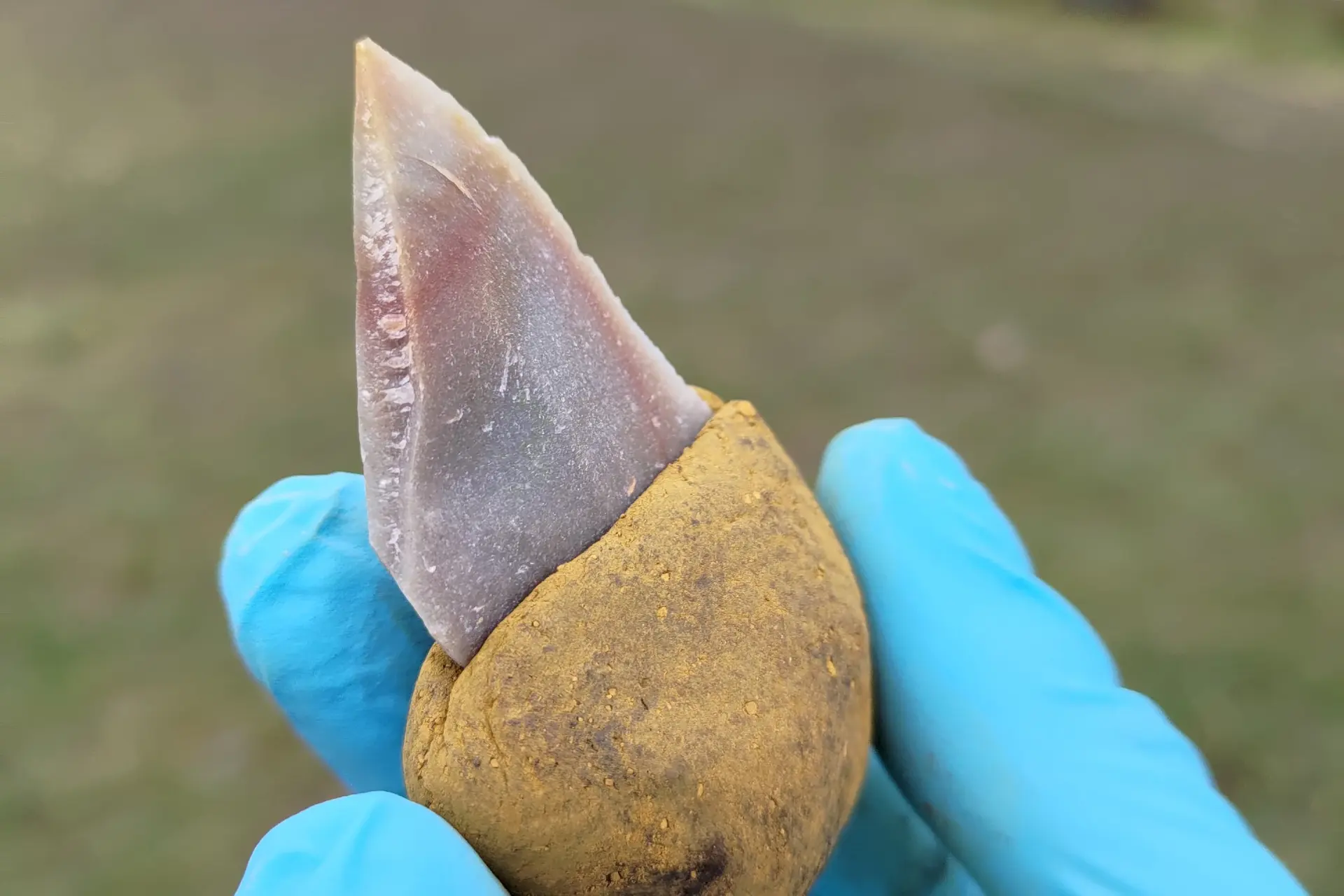
Neanderthals, our closest extinct cousins who roamed Europe for hundreds of thousands of years before modern humans entered the picture, were more intelligent and resourceful than meets the eye. According to new findings, Neanderthals, crafted stone tools using a multifaceted adhesive that is surprisingly effective and clever.
The researchers analyzed ancient tools excavated from Le Moustier, a renowned archaeological site in France. These tools, dating back to the Middle Palaeolithic period, reveal that Neanderthals were not only skilled craftsmen but also possessed a nuanced understanding of materials.
The ancient adhesive is a mixture of ochre and bitumen on the tools — ingredients that require careful selection and preparation.
This finding challenges the long-standing narrative of Neanderthals as mere brute survivors. Instead, they were quite thoughtful innovators, not all that different from our species and their Stone Age technology. The adhesives discovered suggest a level of planning, experimentation, and environmental knowledge that aligns Neanderthals more closely with early modern humans than previously recognized.
“These astonishingly well-preserved tools showcase a technical solution broadly similar to examples of tools made by early modern humans in Africa, but the exact recipe reflects a Neanderthal ‘spin,’ which is the production of grips for handheld tools,” said Radu Iovita, an associate professor at New York University’s Center for the Study of Human Origins.
A recipe from the ancient past
The research, a collaborative effort involving experts from New York University, the University of Tübingen, and the National Museums in Berlin, re-examines artifacts that had been largely overlooked since their discovery in the early 20th century. Some of the stone tools are as ancient as 120,000 years old. The tools, once unwrapped from their decades-long slumber, revealed traces of a concoction that is both simple and sophisticated.
By combining ochre, a natural pigment, with bitumen, a type of natural asphalt, Neanderthals created an adhesive that was effective yet elegant. The mixture was adept at binding stone tools to handles without sticking to the hands, a balance that even modern adhesives may struggle to achieve. This composition facilitates the crafting of durable tools while showing a deeper understanding of material properties on the part of the glue’s craftsmen.
While bitumen alone can act as glue, the addition of ochre in just the right amounts (over 50% in some cases) made the ‘product’ a lot better. The researchers recreated the recipe and performed stress tests, proving the effectiveness of the Neanderthal glue.
“It was different when we used liquid bitumen, which is not really suitable for gluing. If 55 percent ochre is added, a malleable mass is formed,” said lead researcher Patrick Schmidt from the University of Tübingen.

Microscopic analyses further confirmed the use of these adhesives, showing wear patterns indicative of applied grips, not merely accidental smudges. Such evidence points to a deliberate design, pushing back the timeline for complex adhesive use in Europe by thousands of years.
A reflection on human evolution
The implications of this study extend beyond the adhesive itself. The effort to gather materials from distant locations, the precision in mixing, and the application of the adhesive all suggest a level of cognitive sophistication that demands a re-evaluation of Neanderthal society.
Although Neanderthals and Homo sapiens split from a common ancestor roughly half a million years ago, their technological achievements converge into a common thread, suggesting parallel paths of thought and invention.
Previously, researchers uncovered a pendant made from ancient eagle talons and cave paintings in Spain made by Neanderthal artists.
The new study appeared in the journal Science Advances.


